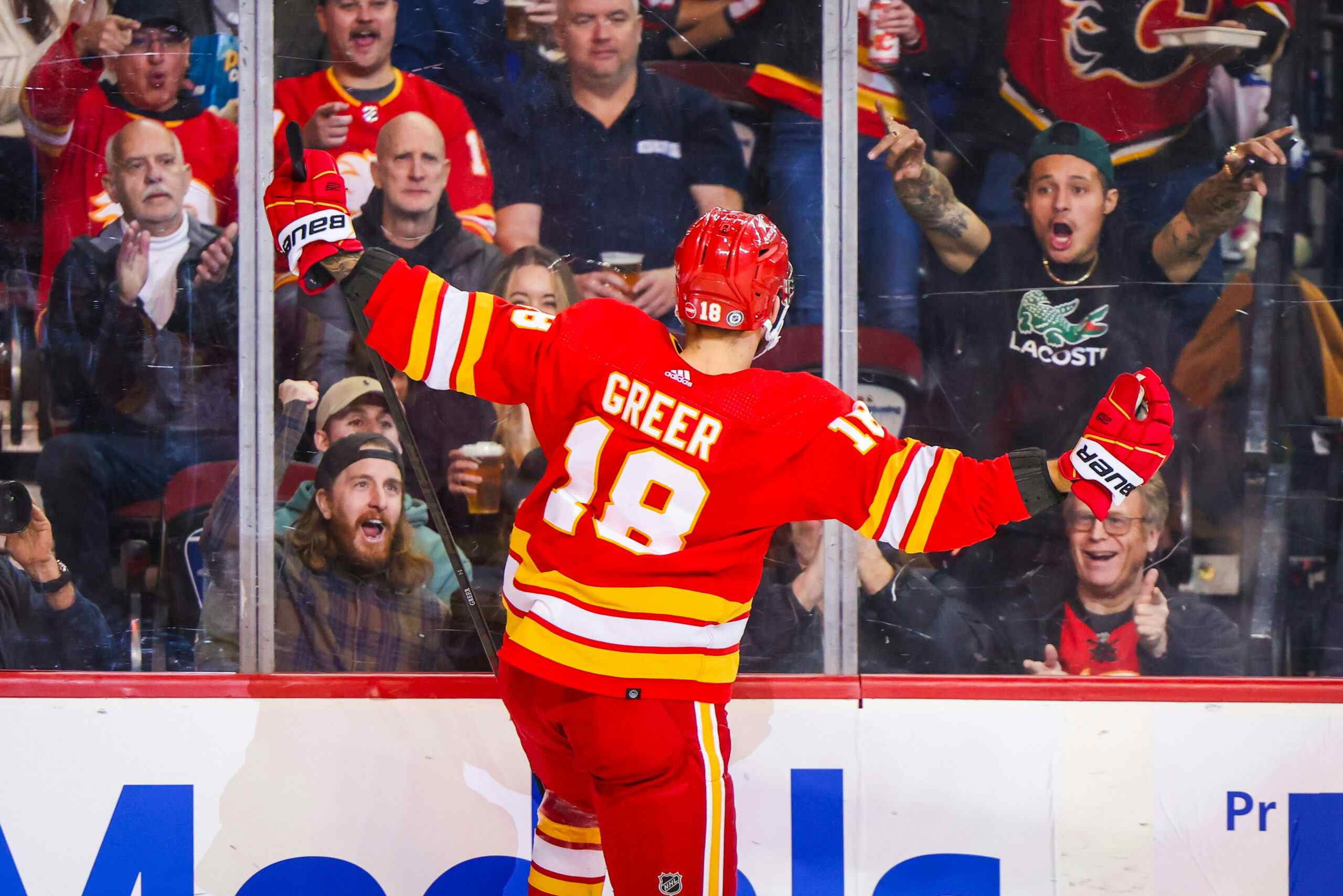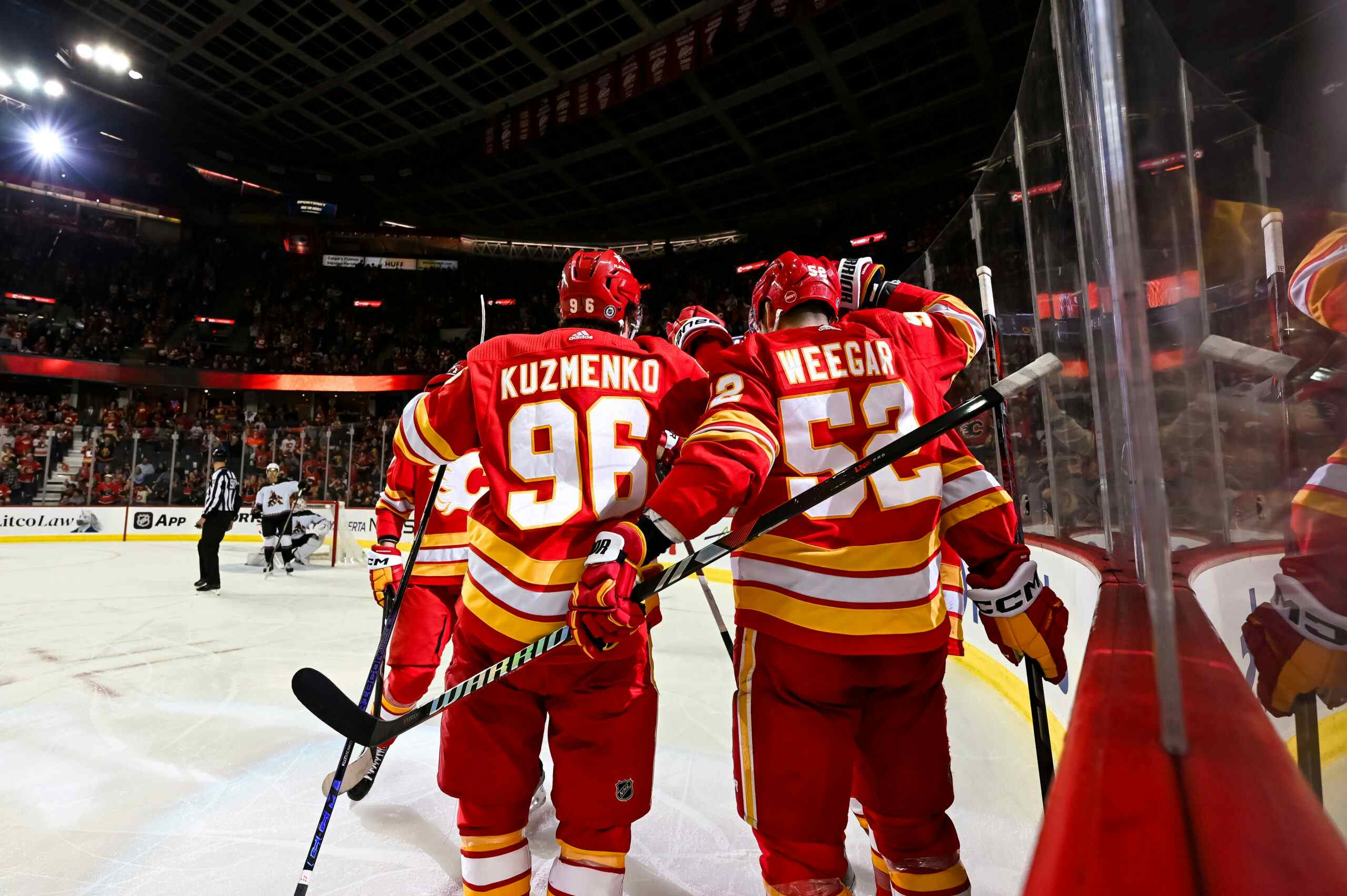2016 vs. 2017: The eery similarities to start the season

At 4-4-0, the Calgary Flames are off to a mediocre start, and not just because of their record.
Overall, Calgary’s body of work has been underwhelming relative to expectations and the team’s solid second half of last season. The strangest part of all of this, though, is how strangely similar October 2017 is to what we saw during the same month one year ago, save the man you’re looking at above.
It’s not just your eye that will tell you the Flames are playing far too similar to the way they started last year’s campaign. Below is a very general look at the first eight games of this season compared to last. Other than goaltending, the outputs are eerily close to one another.

The biggest frustration for many, including the coaching staff, is Calgary accomplished a lot during the final 40 games of last season. Not only was their record strong, but they were playing a sustainable brand of hockey that earned them a playoff spot on merit. Their strong finish to last year’s season had them viewed as a contender by Sportsbooks like Bodog heading into 2017-18.
With positive additions like Mike Smith and Travis Hamonic, the expectation was for the Flames to pick up where they left off, and rightly so. It’s annoying on one hand, but promising on the other, knowing they turned things around last season. So just how similar are Calgary’s last two Octobers?
Goaltending
Really, the only time the word “similar” doesn’t apply is at this position. This section doesn’t require a lot of words because our eyes and the numbers below tell us enough.

Smith (with a 12-minute Eddie Lack cameo) is a full four percentage points ahead of where the Brian Elliott/Chad Johnson duo was one year ago, including a whopping 11.7% difference when killing penalties. Even the two percent swing at even strength is significant and shows how much better this area has been.
Defence
Perhaps the most disappointing study so far has been Calgary’s work defending in the early going. While Smith has been great, the Flames have put him to work far too often and have had some serious issues with shot and zone entry suppression. A look at their five-on-five outputs through eight games the last two years tells us Calgary has actually been worse defensively in October 2017.
Scoring chance data throughout courtesy NaturalStatTrick (high danger chances cited).

The Flames are giving up more than 26 shots per game five-on-five and teams are firing more pucks towards their net than they were at this time last year. By and large, opposing players are entering Calgary’s zone uncontested too often and keeping the puck there for good stretches.
Slightly improved is the team’s work once defending inside their own blueline. While still allowing too many high danger chances, the Flames have allowed fewer 10-bellers to start this season. That, coupled with Smith’s work, have been the only improvements on this side of the puck.
Offence
As referenced above, the Flames have actually improved on the possession side of things year over year. It’s not a massive jump, and they’re still underwater to start the season, but it is slightly better. The biggest reason for that is the fact Calgary has started this campaign a little more effectively on the attack.

While the Flames actually scored more through the first eight games of last season, they’ve generated more overall early on this year. All in all, though, Calgary’s slight step forward with the puck is counteracted by their step back defending, which makes their five-on-five game extremely similar to what we saw in October of 2016.
Special teams
When looking at the Flames on the powerplay, you’ll see some similarities when comparing the early stages of 2016 and 2017, too. Calgary has received one fewer powerplay than at this point last year and has put almost identical amounts of rubber at the net.

Positively, the Flames have been more efficient with their powerplay early on in 2017. They’ve generated more high quality chances and scored on two more occasions. A lot of that can be attributed to familiarity all around. The players are more comfortable with both Dave Cameron’s powerplay alignment and with who they’re playing with; Calgary’s powerplay units are essentially unchanged from the second half of last season.
The penalty kill is an interesting comparison, too. The Flames are taking too many penalties to start, much like last year; once again, they’re averaging just under five times shorthanded per game. Once the team is killing, though, the numbers are pretty comparable, save one area.

Calgary’s penalty kill was simply dreadful to start last season, mainly because of poor goaltending. Smith, however, has gotten the job done at a solid clip on the PK and it’s the main reason why the team’s percentage is up more than 11%.
Conclusion
Right now, the Flames look strikingly similar to the team that struggled out of the gates last year. October of 2016 saw a 3-4-1 start turn into a 5-10-1 hole, which clearly isn’t ideal. Luckily, Calgary’s goaltending has been consistently strong, and that leads me to believe a similar slide can be avoided.
However, if the Flames want to approach the upper reaches of the NHL’s hierarchy, they’re going to need to improve significantly. Calgary has been average or below average in most facets of their game thus far and they’ll need more than just improved goaltending to take the big step they’re hoping to.
Recent articles from Pat Steinberg





